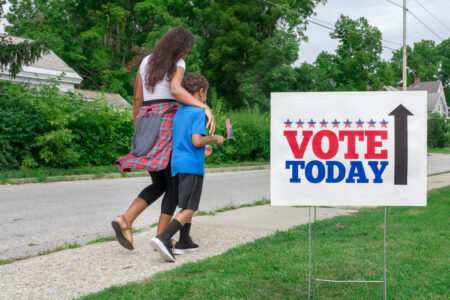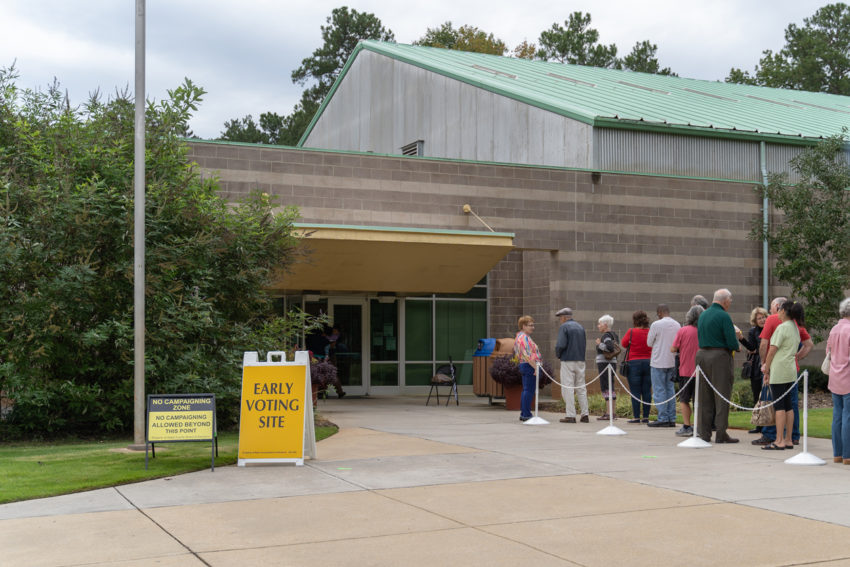
Share On Social!
For years, political analysts and partisan think tanks have continued to focus on one group of Americans in order to win elections: Latinos.
About 2 million Latinos are expected to vote during the 2020 presidential election, accounting for the largest non-white demographic group in history. They are just over 13% of the electorate this year, according to new data from the Pew Research Center.
Expert says, with those demographics, 2020 presents a historic opportunity for Latinos to make their mark on national politics and factor in on who takes office in the White House.
What’s the History of Latino Voting in the Presidential Election?
Historically, relatively few registered Latinos voted in presidential elections.
When it comes to party, democrats have maintained a significant edge among Latino voters.
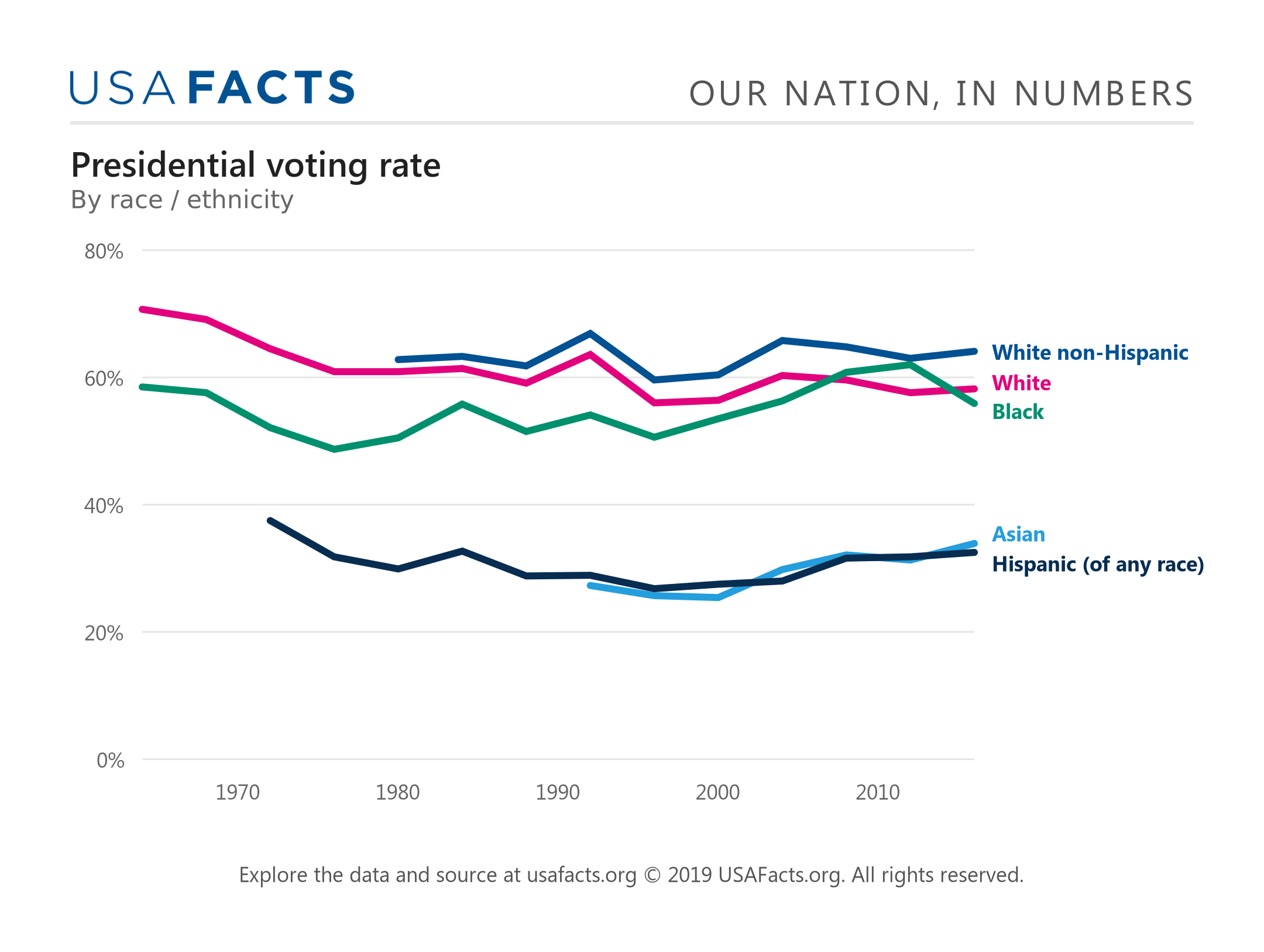 Women vote at higher rates than men across all racial and ethnic groups in the US. That gap is particularly wide for Latino voters.
Women vote at higher rates than men across all racial and ethnic groups in the US. That gap is particularly wide for Latino voters.
Latino voters more engaged in 2018 than in previous midterms, according to a Pew Research study. That is an improvement from years past.
Still, it has been a trend that is on the rise.
This enthusiasm stands in contrast to trends in Hispanic voting in recent midterms, researchers for the Pew Research center write.
“In 2014, Hispanics cast a record 6.8 million ballots out of 25 million eligible voters, for a voter turnout rate of 27%. But that was far below the turnout rate among blacks (41%) and whites (46%) that year. It was also down from 2010, when 31% of Hispanic eligible voters turned out to vote.”
Why Are Latino Voters Important?
Experts believe, a highly anticipated “Latino surge” and “sleeping giant” that will make a big difference in the 2020 presidential election.
Many polls suggest that Latinos could swing the 2020 Election in many states where the Latino population is over a million. Latino voters in the six battleground states of Arizona, Florida, Nevada, North Carolina, Pennsylvania, and Texas can make a big difference in these states. Two-in-three Latino eligible voters live in just five states.
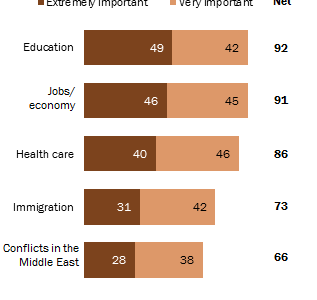 Eligible Latino voter populations vary significantly by state.
Eligible Latino voter populations vary significantly by state.
The highest shares in the country are in Maine, where 71% Latino population is eligible to vote, according to a Pew Research study. Montana’s 68% of eligible Latino voters is second.
Among states with the largest Latino populations, about half of the Latino population are eligible to vote, including Florida (56%), California (51%), and Texas (50%).
Young Latinos are especially critical for this year’s presidential election, but only if they show up to the polls.
The nation’s Latino population just reached 60.6 million. It is one of the youngest and fastest-growing groups in the US.
“[The Latino population] composition is also changing as the foreign-born share has fallen and U.S. births now drive growth,” researchers for the Pew Research center write. “Overall about one-third of all Latinos are foreign-born. Among the about 19 million Latino immigrants, some 8 million are unauthorized immigrants.”
Moreover, two young Latinos in America turn 18 every minute.
Many experts believe that young Latinos could swing the outcome of the election if they come out to vote.
What Barriers Face Latino Voters for the 2020 Presidential Election?
In the 2014 midterm elections, Latinos were more concerned about “education, health care, immigration, jobs, and the economy, and conflicts in the Middle East,” according to a Pew Research study.
Polls have consistently shown that Latino voters in Texas and California list health care, economic inequality, and immigration as their top issues. 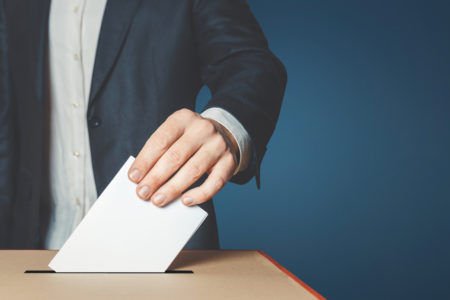
“Women vote at higher rates than men across all racial and ethnic groups in the US. That gap is particularly wide for Latino voters,” Daisy Contreras, with the World public radio, writes. “The key to winning the Latino electorate, experts say, is Latinas. Latinas’ voting power goes beyond their individual votes: They’re likely to encourage friends and family to vote, too.
“That’s why campaigns and organizations should target them, experts say.”
Still, that’s not stopping campaigns from trying to target this group.
“We’re not taking anything for granted in this election,” Jennifer Molina, Biden’s Latino media director told Politico. “The Latino vote is critically important, which is why we’re bringing on Latino Decisions to help us with our messaging and outreach in order to engage with Latino voters on why Joe Biden is the best choice for President.”
How Can Pandemic Change in the 2020 Presidential Election?
The pandemic is forcing a massive shift to mailed-in ballots in primary elections nationwide.
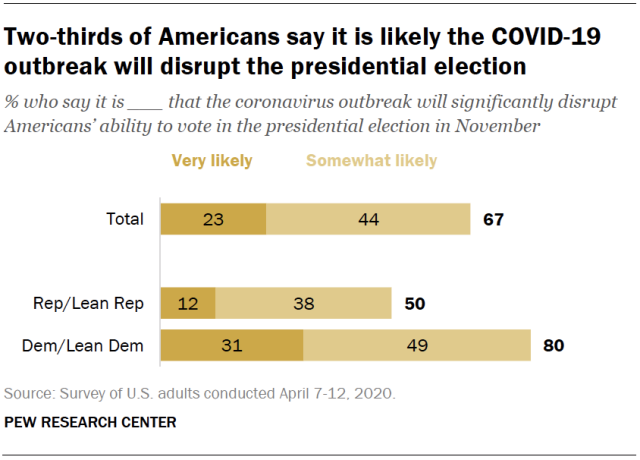 Two-thirds of Americans say it is likely the pandemic COVID-19 outbreak will disrupt the presidential election, according to a recent Pew report.
Two-thirds of Americans say it is likely the pandemic COVID-19 outbreak will disrupt the presidential election, according to a recent Pew report.
This is not a typical election year. “There are absolutely no festivals this summer,” said Jen Miller, the executive director of the league’s state chapter, to New York Times.
What Efforts Are Happening to Boost Latino Voter Participating?
Grassroots organizations across the country have spent months and years getting as many of them registered to vote as possible in the lead-up to the presidential election.
Mi Familia Vota, a national organization based in Phoenix, is announcing a $10 million campaign to turn out Latino voters in several of this year’s battleground states.
The campaign comes amid rising concerns about Latino turnout during the deadly pandemic, which has hit particularly hard on the Latino community.
Latinos account for higher rates of infection from COVID-19 when compared to their share of the population in several states, and many are struggling financially from lost jobs and lower wages.
Voto Latino is dedicated to registering Latinx voters and encouraging civic participation.
“It’s important to be an informed voter, so you can choose the best candidate that aligns most closely with your values,” according to their website.
Explore More:
Increasing Civic EngagementBy The Numbers
50
percent
of big U.S cities have a local board of health


